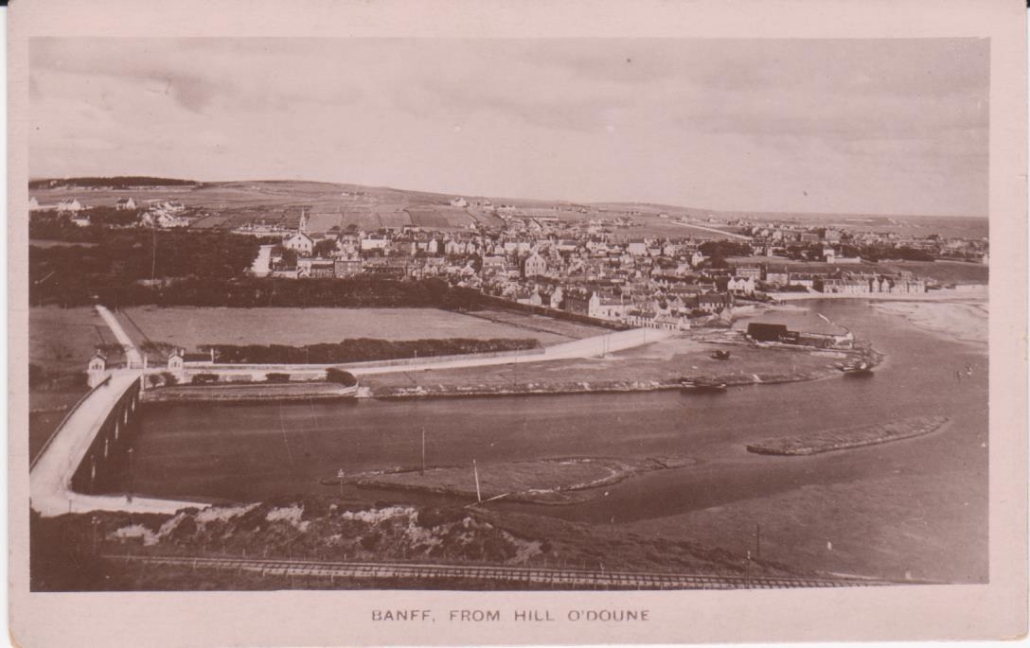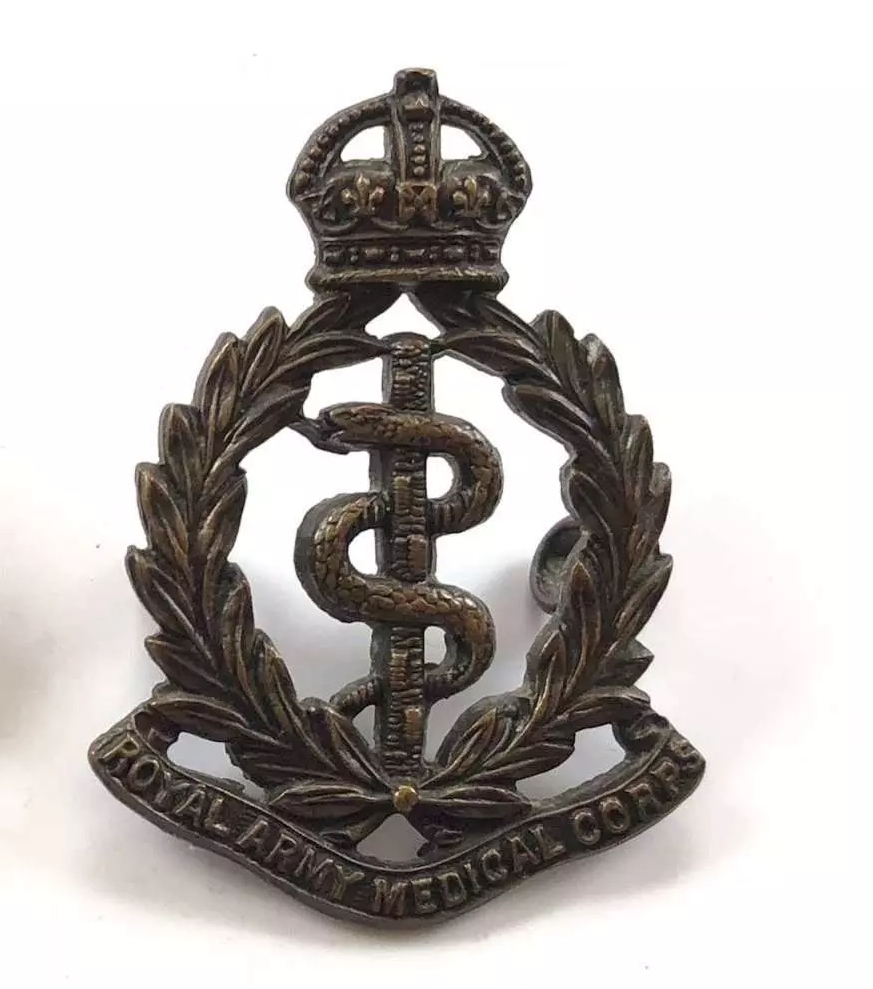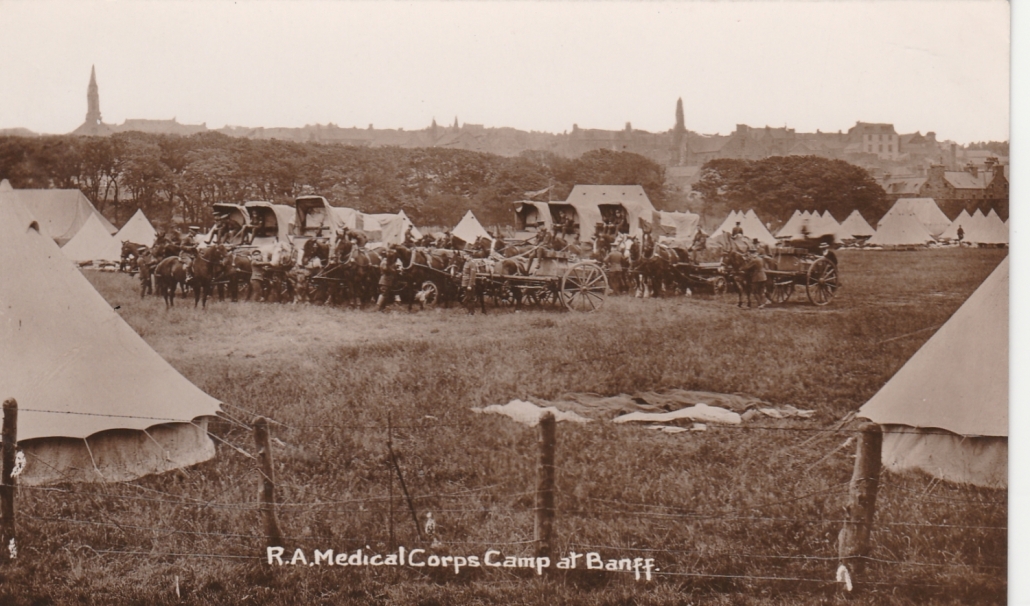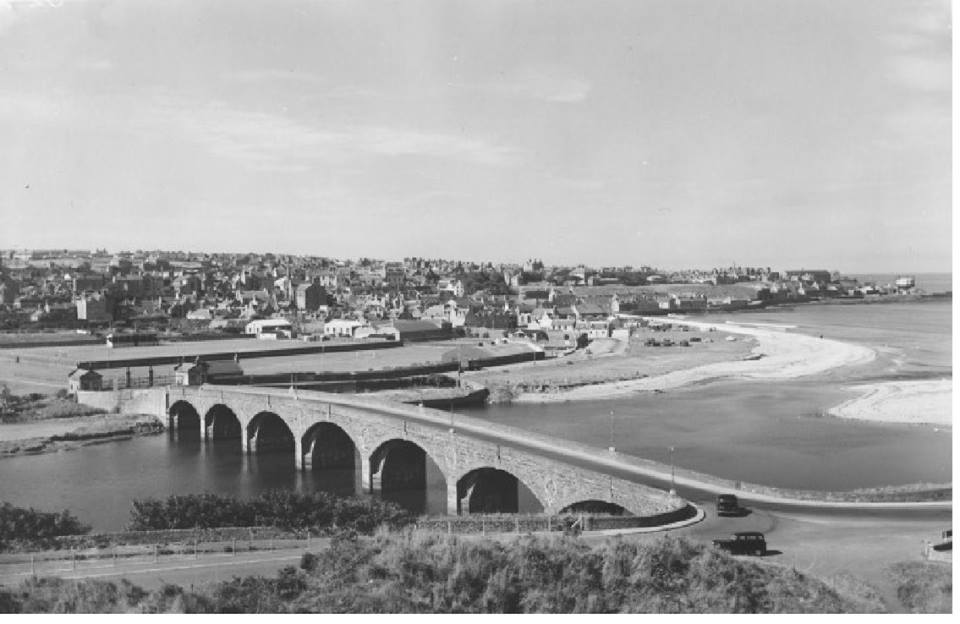This Story was prompted by the finding of a rare postcard as shown above. The Royal Army Medical Corps used to hold an annual camp, and Banff – specifically Canal Park – was the location in 1912. The Banff skyline really hasn’t changed that much!

Five hundred years ago, Canal Park was a swamp, part of the Deveron estuary. It was drained, perhaps by the influence of the Carmelites in Banff, and has had several uses since. It’s name came from four hundred years ago, at the time of the building of Duff House in the early 1700’s, when a canal was built from Banff Bay to the back of Duff House. The canal was the means of getting the stones that had been carved at William Adam’s works on the Forth, to the building site; brought to Banff Bay often on William Duff’s own ships, and then onto barges to Duff House. Even though the canal no longer exists the name has stuck.
Canal Park was part of the Duff House grounds, the wall now visible just behind the silversmiths, extending along the side of Bridge Road to the gatehouse still existing in the Co-op car park. In 1906 the Duke of Fife gifted the land to the Burgh Councils of Banff and Macduff for recreational uses and it seems much use was made of this Park. In the early 1900’s Canal Park was one large park, including where the Princess Royal centre is today, as well as the football pitch and tennis courts nearer the river, although officially by then the whole area had been designated Princess Royal Park (named from the 1889 wedding of the 6th Earl Fife (1st Duke of Fife) to Louise the Princess Royal, daughter of the future King Edward VII.
In this 1909 image the line of trees at the back of the Park, which are no longer there, is where the road to the Princess Royal centre and Airlie Gardens sheltered housing now is.

By 1912, the Park was under the care of a joint board from Banff and Macduff Burgh Councils. Activities such as the important Banff Cattle Show were held there, and lots of smaller events such as a Fancy Dress parade.

But in 1912 the Trustees received an application from the Royal Army Medical Corps to hold their annual “camp”, partly because it was such a sheltered location, sheltered on two sides by a high wall, and to the west by the line of trees. This was finally agreed, finding enough space for them and the Cattle Show. The camp started on 20th July 1912 although the whole area was only available after the Cattle Show on the 24th ! It seems both were a great success.
18 officers and 231 men came to the camp, with 52 horses. Two special trains were laid on from Aberdeen to bring the bulk of the men and horses, All were living in tents and a special water supply had been laid out across the park for both the men and the horses. The RAMC officers however received their meals at Duff House Hotel !
A number of activities, drills and exercises and demonstrations were laid on, as well as various parades, sports activities and musical events. What the townsfolk felt about the 05.30 Reveille isn’t reported, but generally the RAMC Camp provided a lot of local attention. On 23rd July a major exercise was held on Doune Hill, setting up a field hospital and transporting “injured” personnel.
The camp was made to be inclusive of the town, local people able to come to some of the events, such as the Banff Pipe Band joining the RAMC Corps Band for various parades and concerts; football and tug-of-war matches between RAMC and towns’ teams. Cricket matches were also played with the Banff team; although the RAMC easily won the cricket they were roundly trounced in football !

The RAMC was formed in 1898 to centralise the provision of emergency first aid at the front line, as well as staffing health centres and hospitals and promoting health and disease prevention. The unit still exists today. Their badge – an early 20th century version shown here – has the “Rod of Asclepius” at it’s centre; the Greek God Asclepius of healing and medicinal arts, typically depicted by a non-venomous snake; a similar badge is used by some Scottish Community First Responder teams today. The RAMC motto is In Arduis Fidelis; “Faithful in Adversity”.


